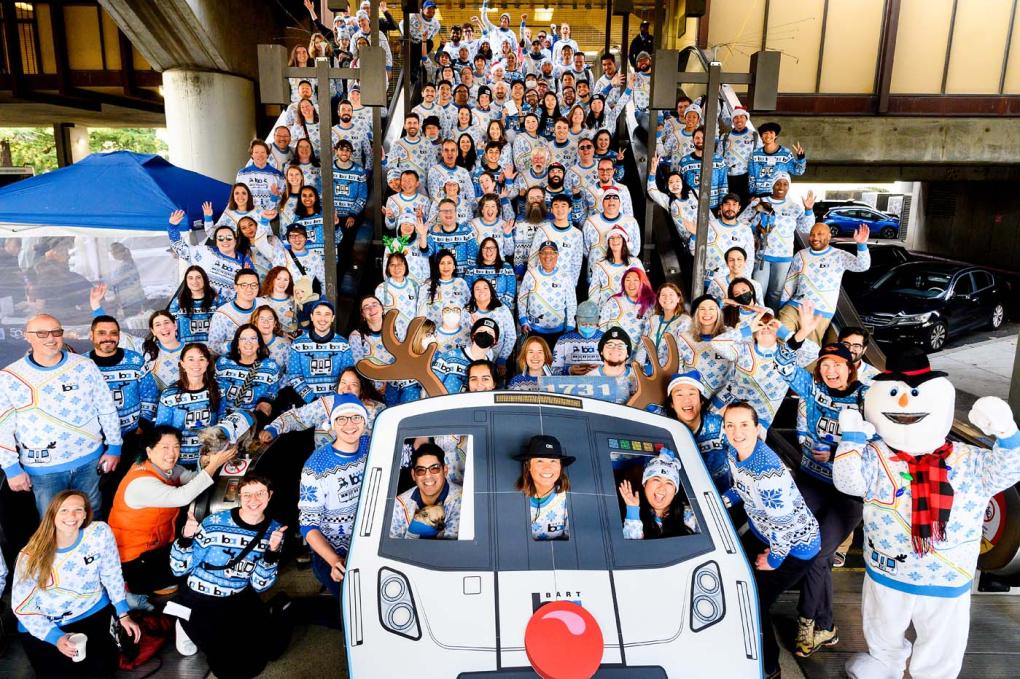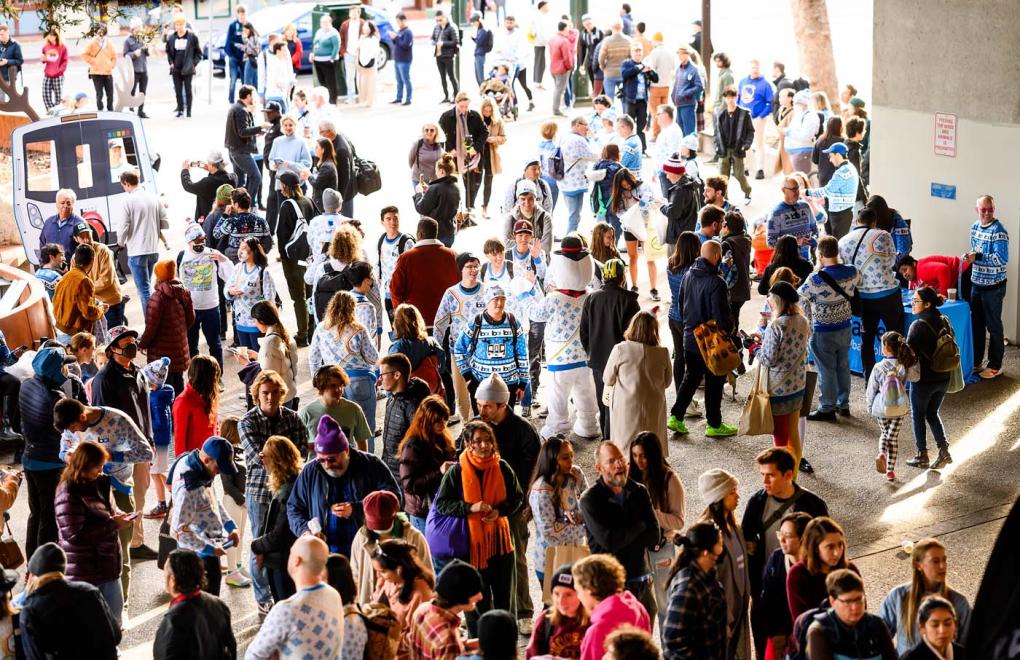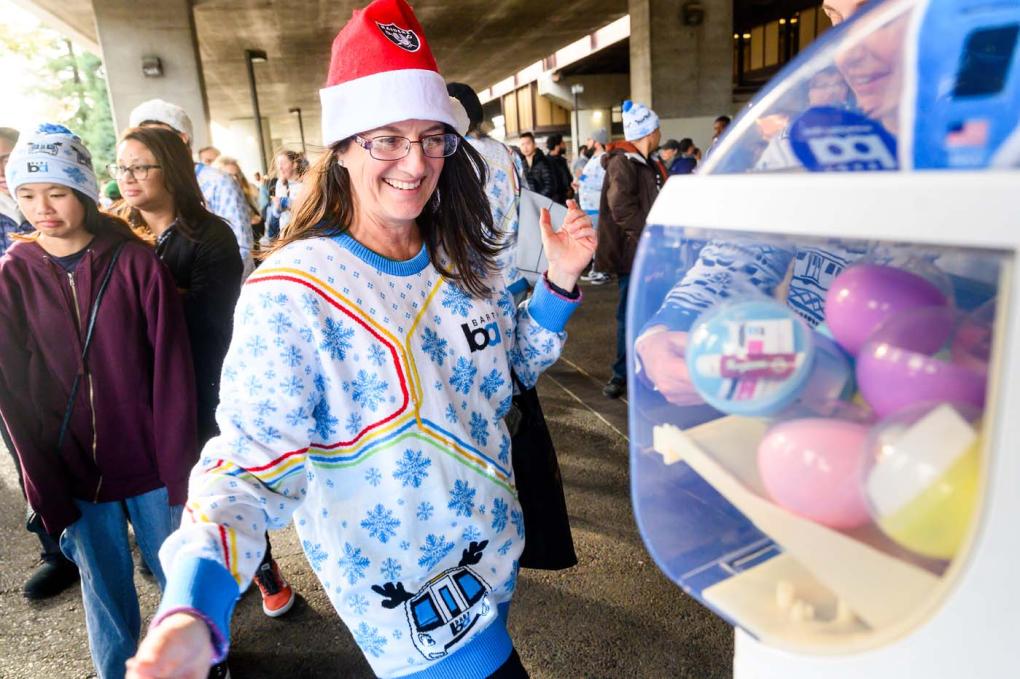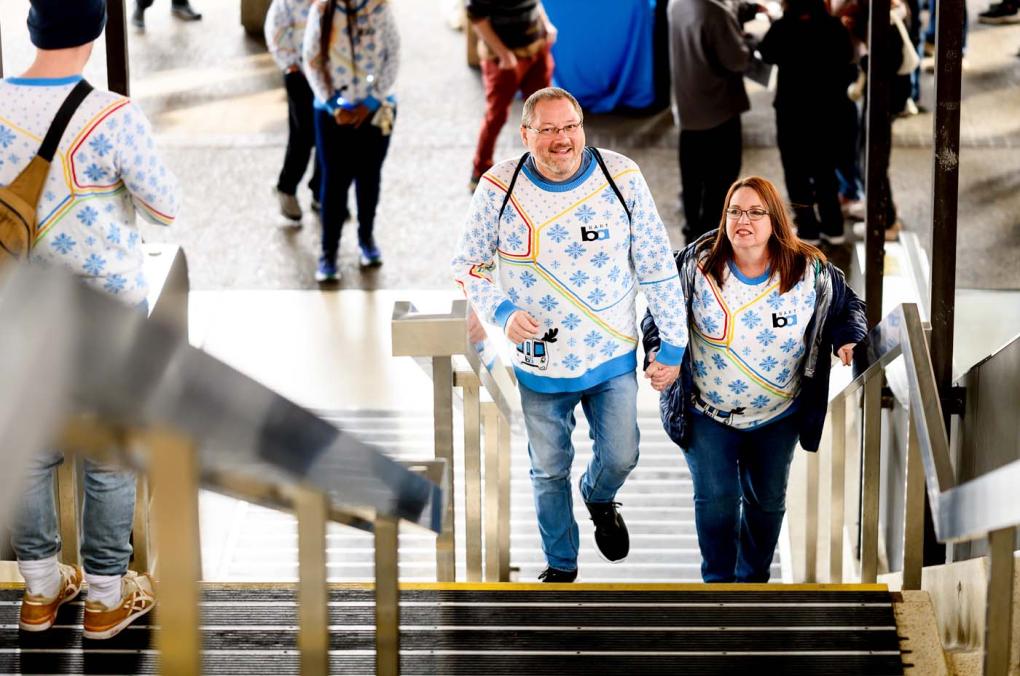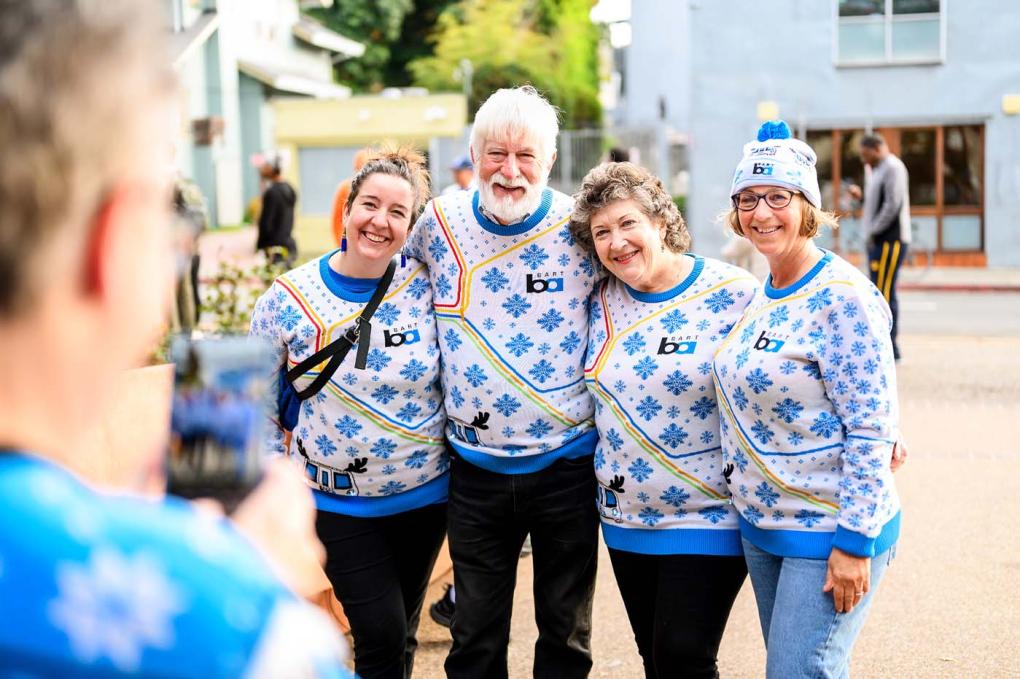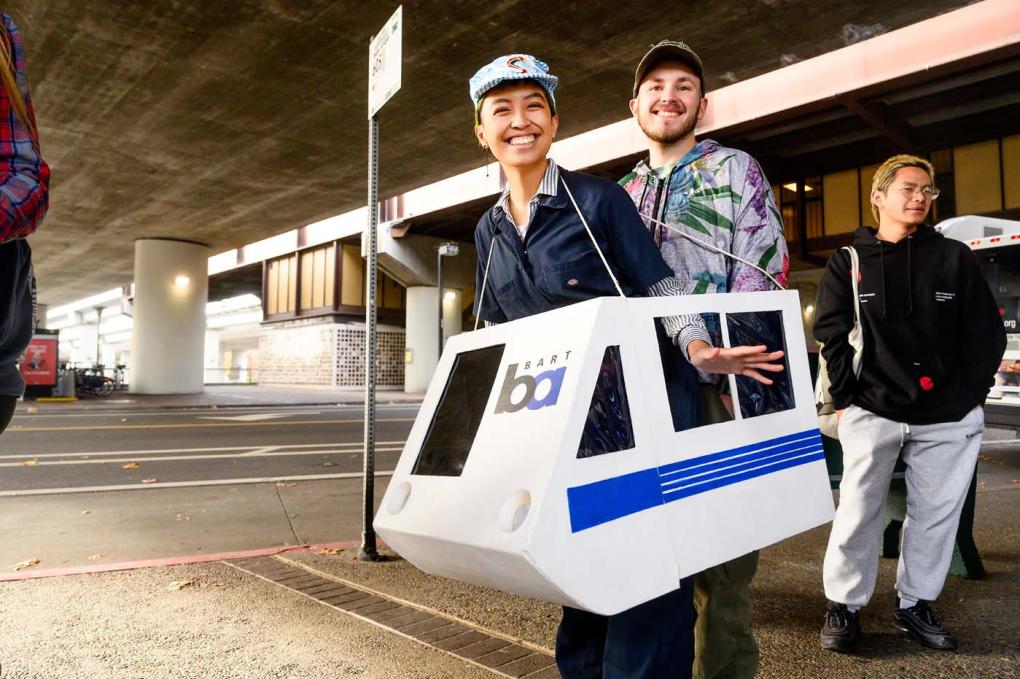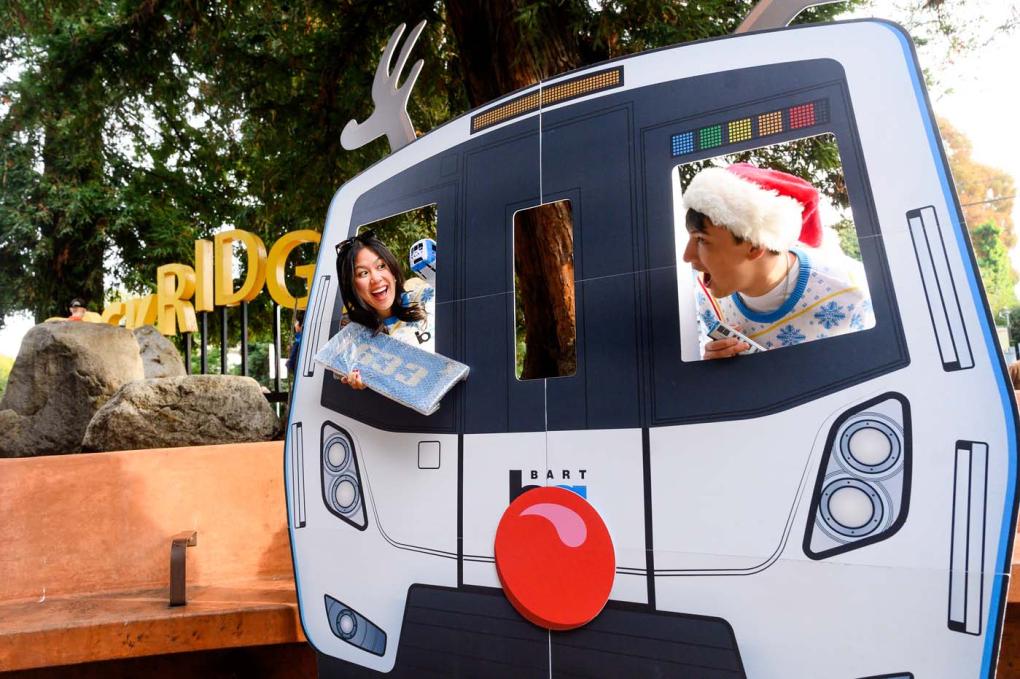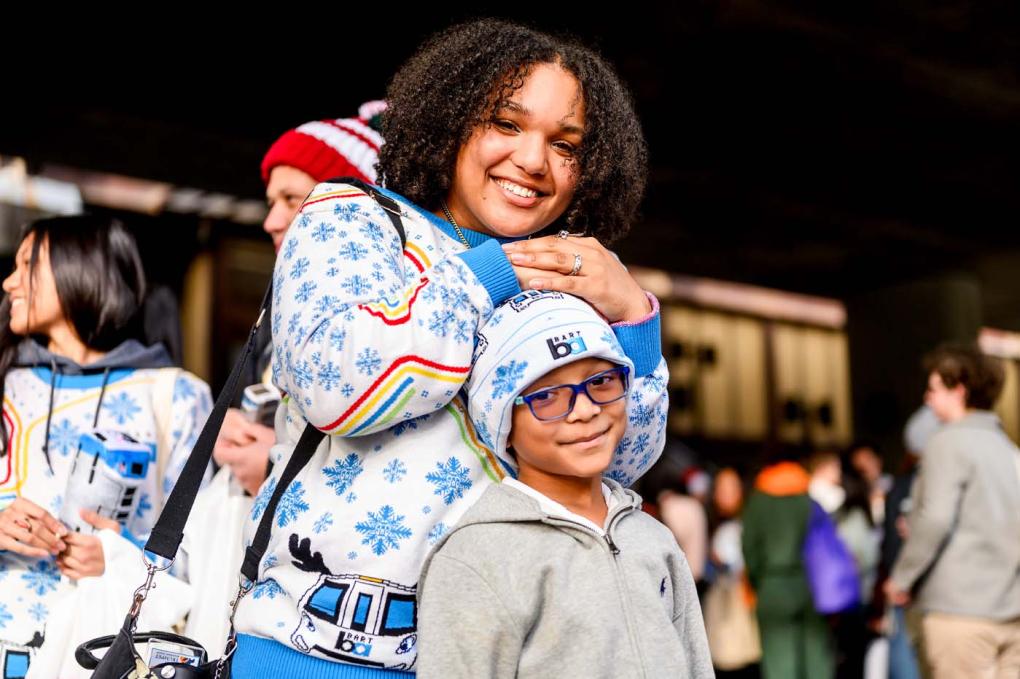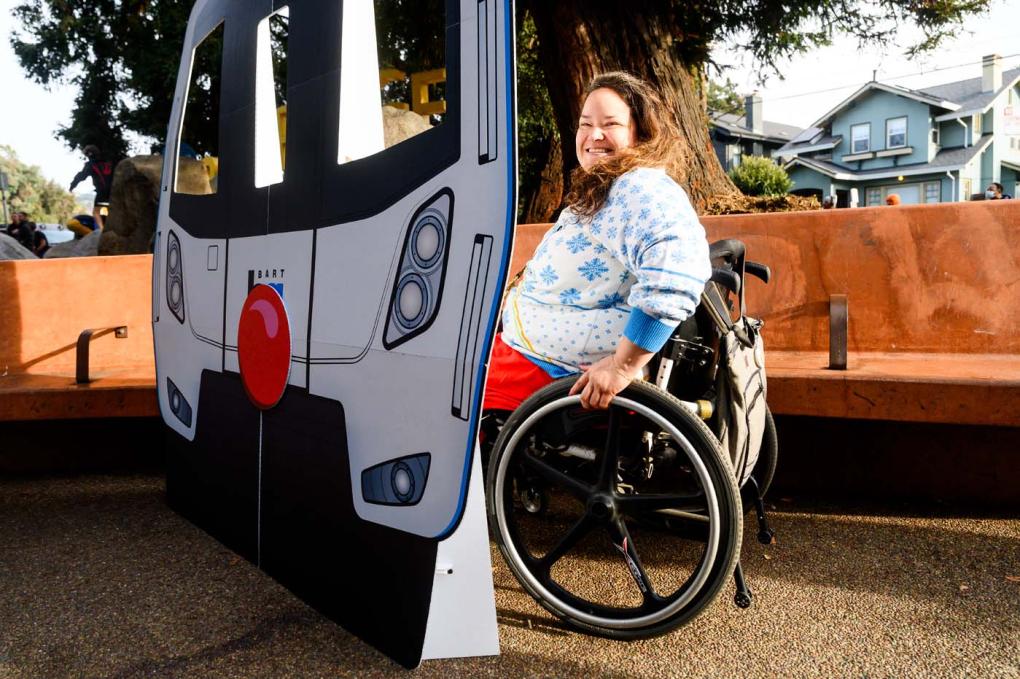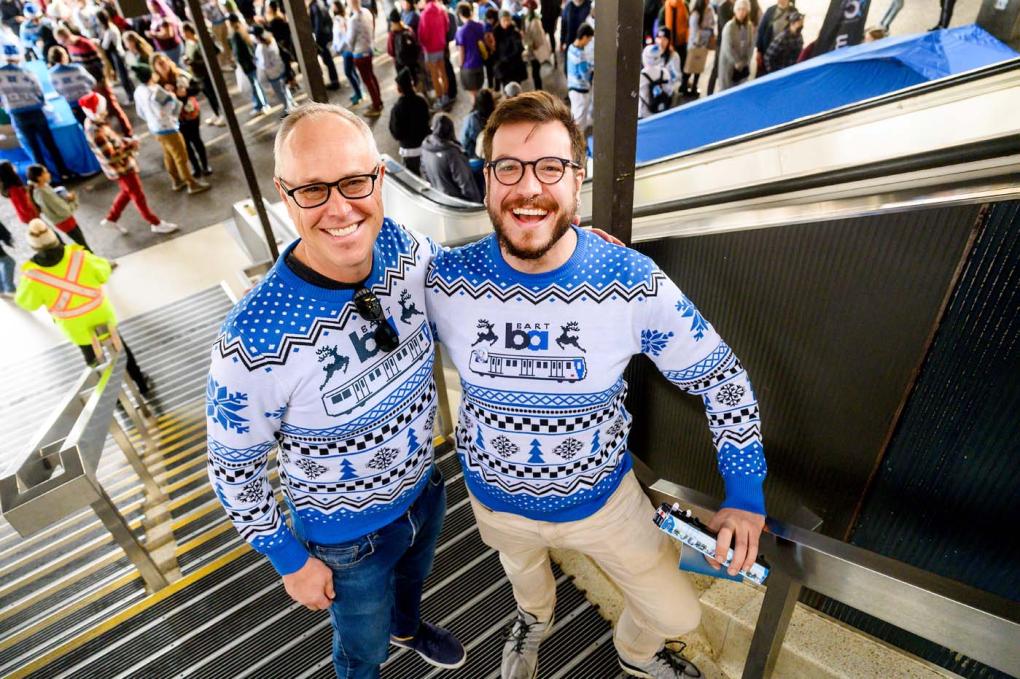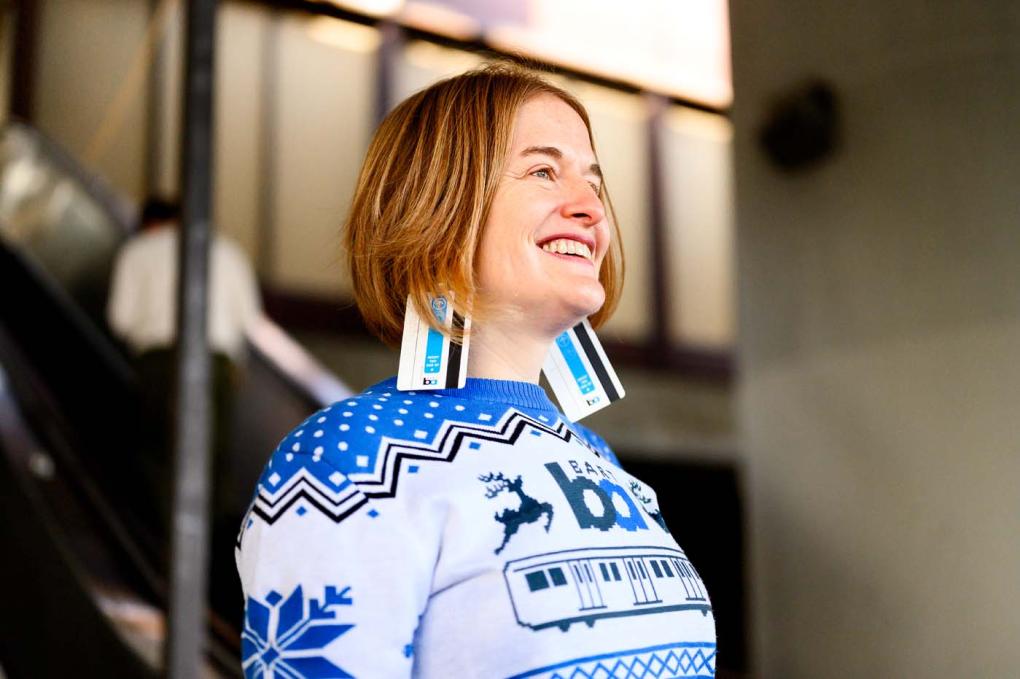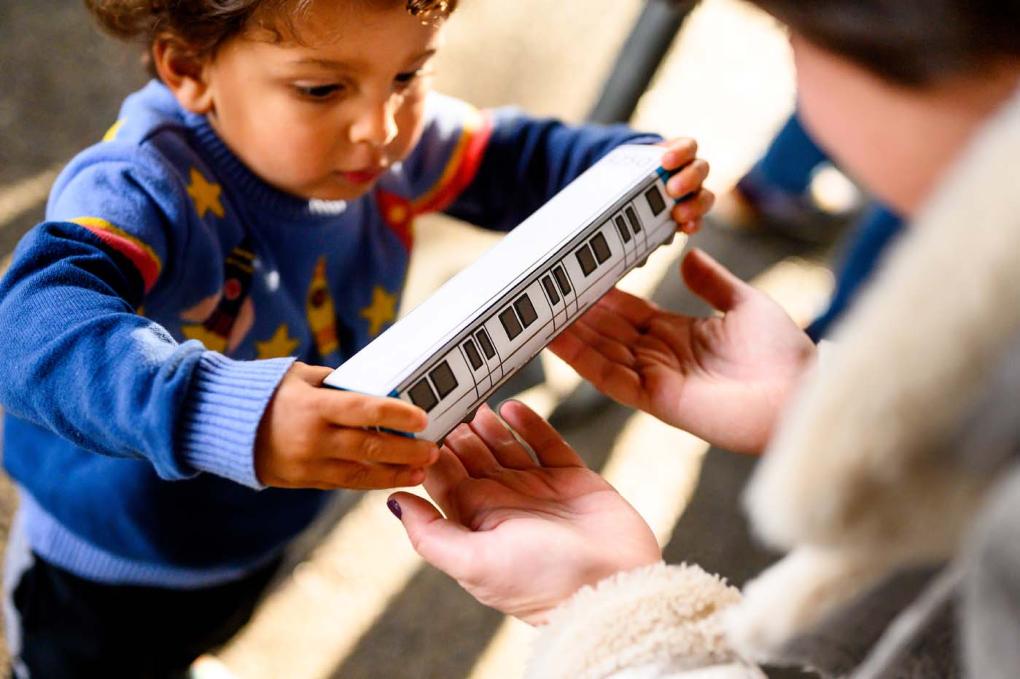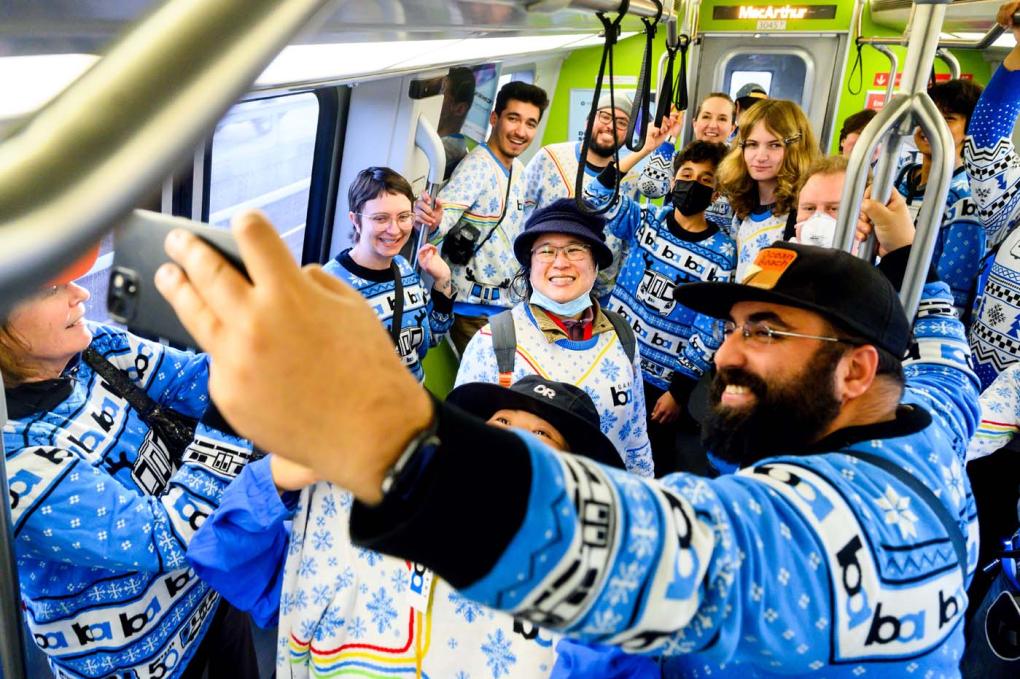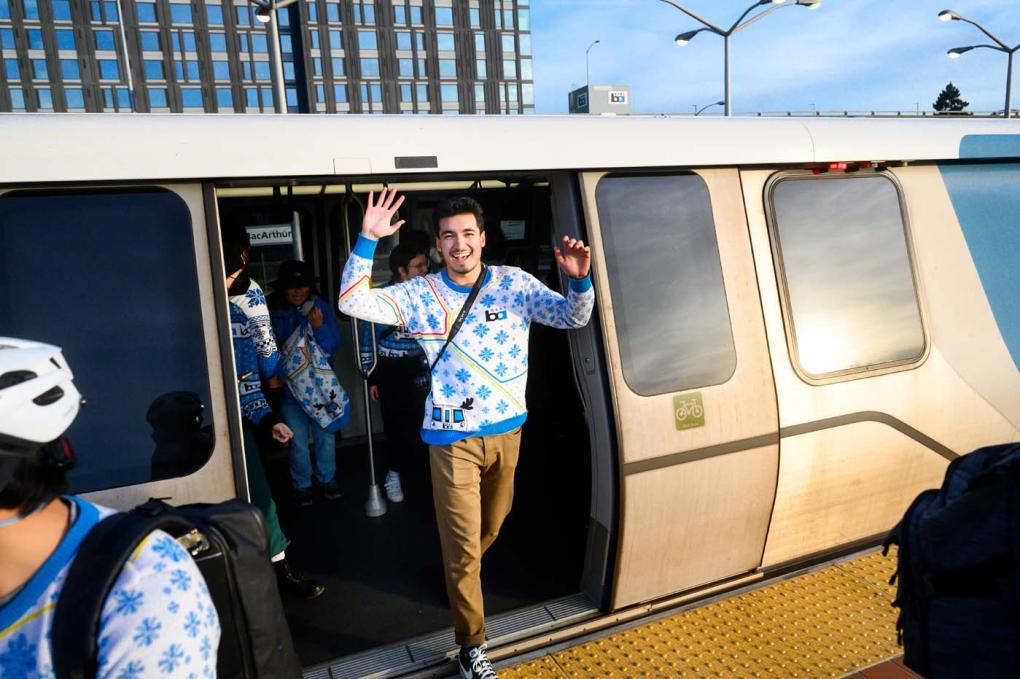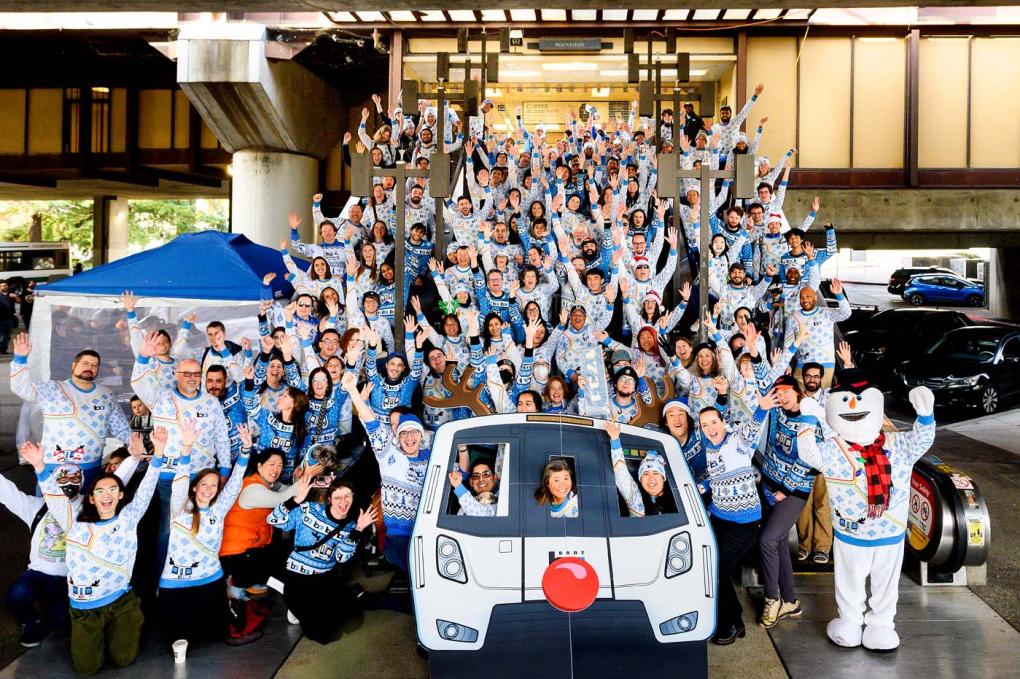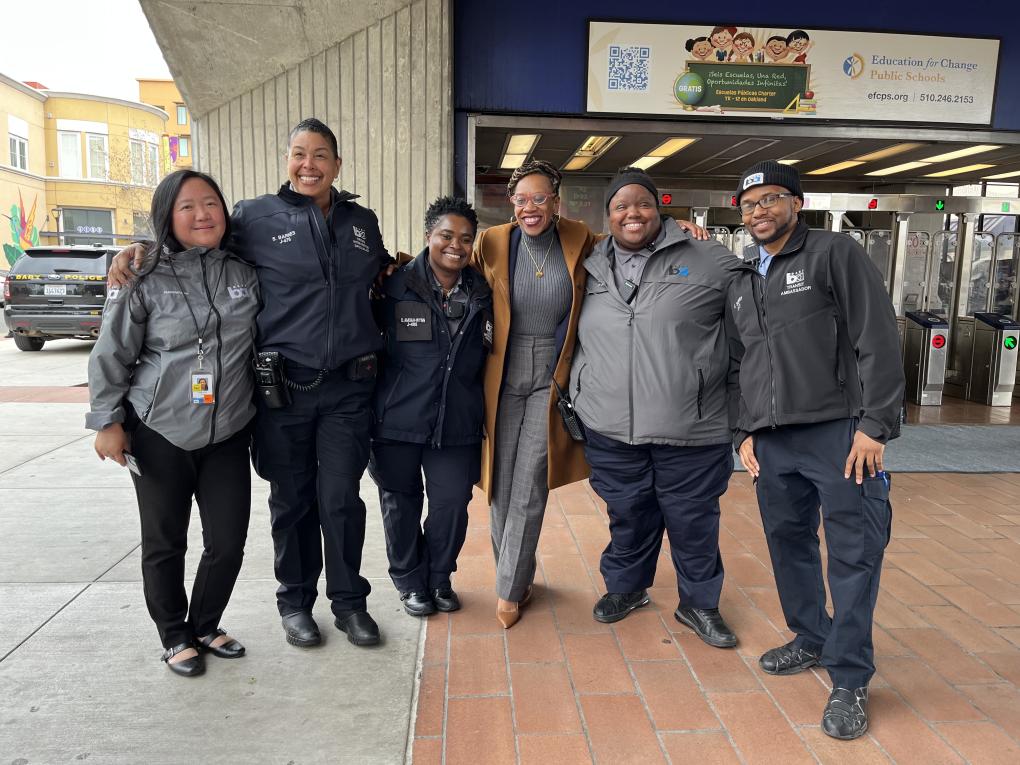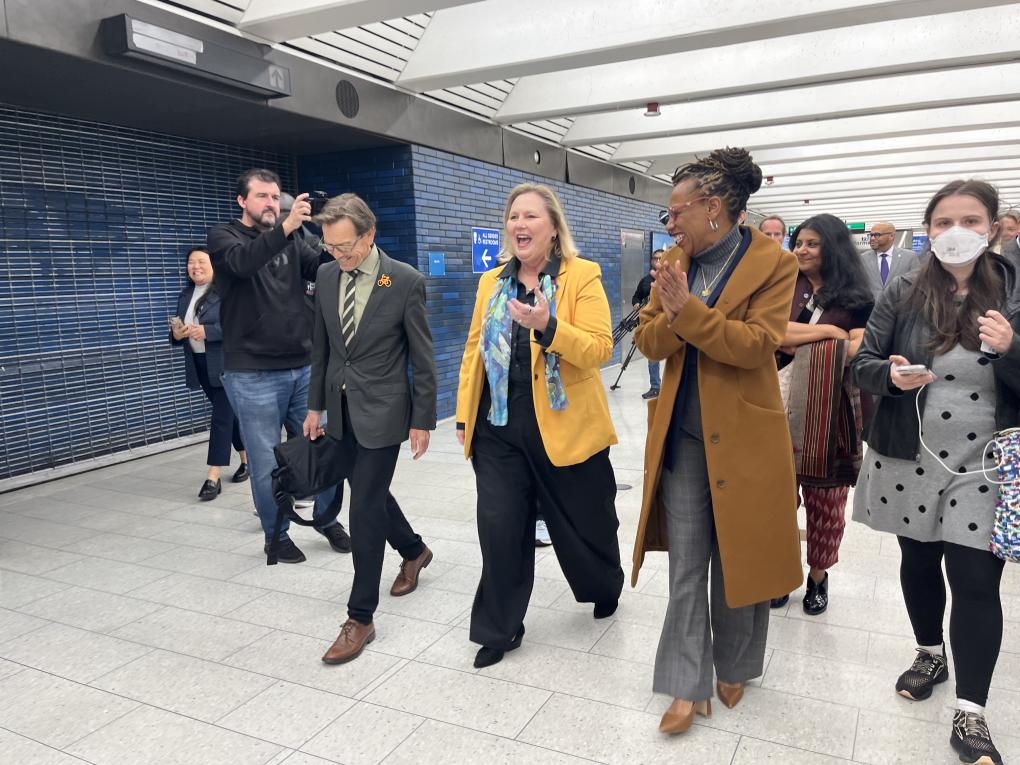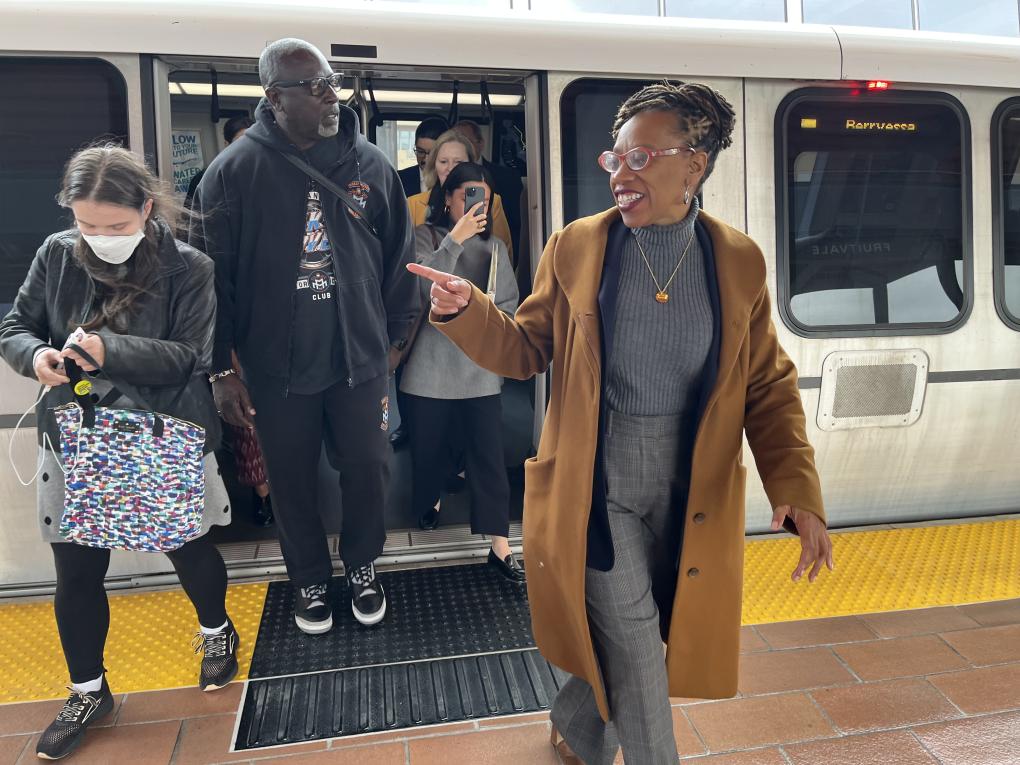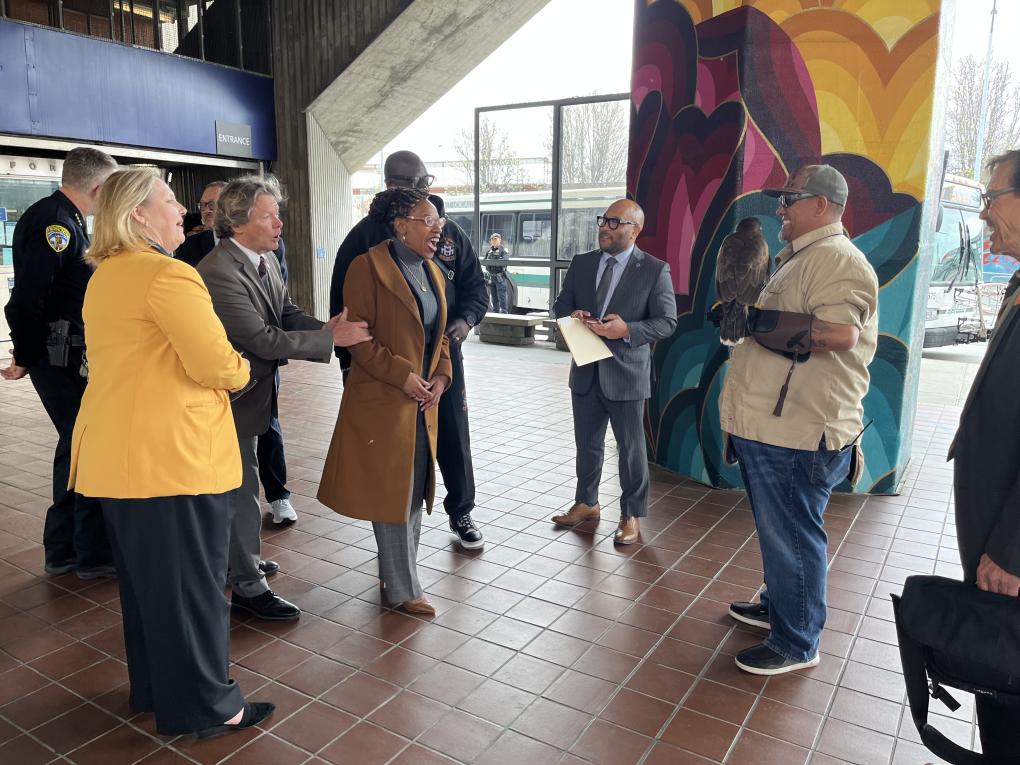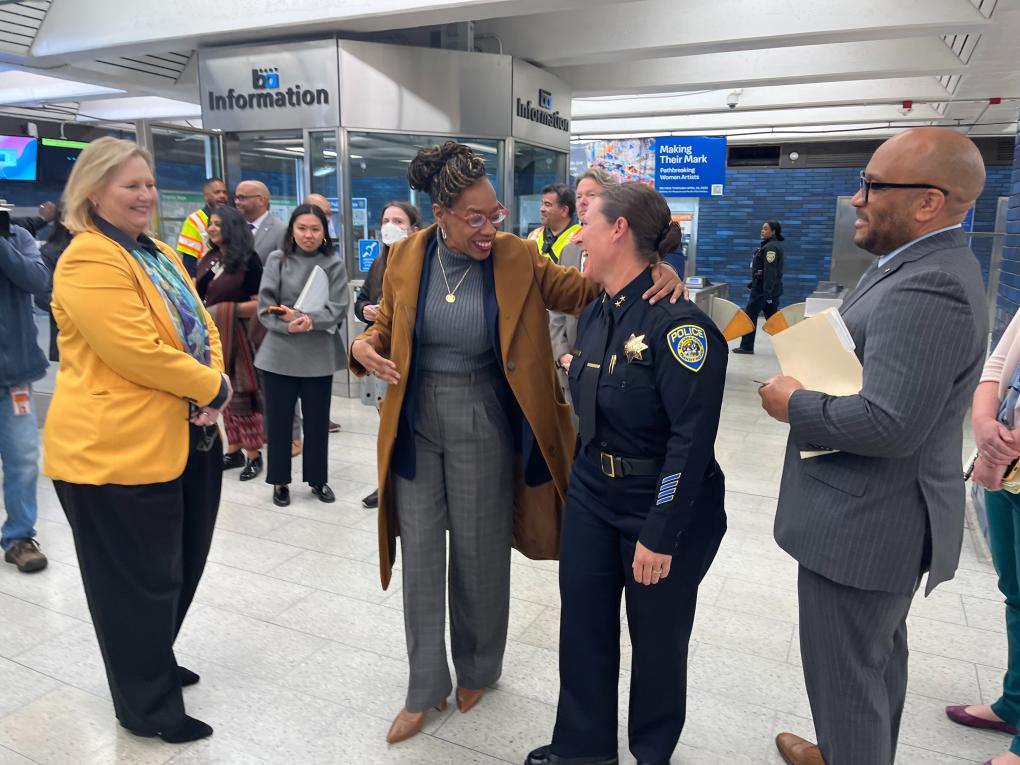Search Results
BART offers chance to throw out first A’s pitch; moves sports fans throughout the Bay Area
Here at BART we love all our Bay Area sports teams, win or lose, professional, college, pee-wee league and more. And we’re proud of moving the fans (and sometimes the players) to their destinations. This year, we’re doing something new with regard to the Oakland Athletics, one of our longtime sponsorship
With rainy season upon us, BART’s resplendent rain gardens are hard at work keeping local waterways clean
A rain garden at Lafayette Station during a storm. The typically yellow hills surrounding Lafayette were green as emeralds on a recent rainy afternoon as yet another storm pummeled the already-inundated Bay Area region. While locals may be tired of all the rain, the region’s thirsty vegetation certainly is
Matt Rinn
BART PD reports strong monthly arrest totals amid redeployment plan that boosts safety presence in trains
Based on preliminary data, the BART Police Department in March and April saw two of its highest monthly arrest totals since the arrival of the pandemic. In March BPD reported 258 arrests systemwide and in April the monthly total increased to 266. On March 20th, BPD implemented a new deployment strategy that
‘Everything happens for a reason’: BART Police officer played semi-pro soccer before joining department
When Tyler Mauldin was three years old, her father handed her a basketball. Instead of dribbling it, she started kicking it. Her dad, who played basketball for Stanford University, realized he needed a new approach. He bought her a soccer ball and enrolled her in a recreational league. At 10, Mauldin began
Walnut Creek
Thursday, May 15: Ride your bike to BART and beyond for Bike to Wherever Day
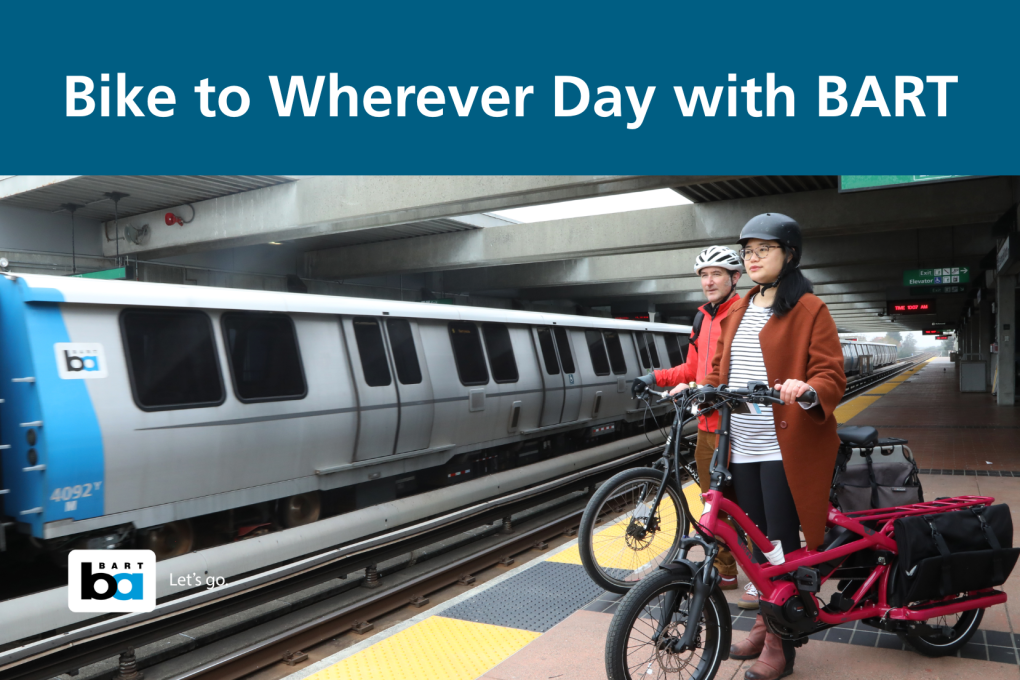
Bike to Wherever Day 2025 is almost here! This Thursday, May 15, join BART to celebrate cycling as a green, fun, and practical way to get around. At BART, we don’t just celebrate BARTable experiences, but BIKEable ones too.
BART will be hosting “energizer stations” throughout the system. If you visit one of the BART stations listed below on Thursday morning, you’ll be greeted by Bike to Wherever Day volunteers handing out free stuff, like coffee and donuts and the famous Bike to Wherever Day swag bags.
Bike to Wherever Day began in 1994 as Bike to Work Day to encourage people to ditch their cars and hop on their bikes. The annual event has since transformed into a monthlong celebration of bicycling, called Bike to Wherever Days. The cornerstone of the month is Bike to Wherever Day.
We hope to see you at a station! Questions? Visit BARTable’s Frequently Asked Questions page.
Learn more about bikes on BART at bart.gov/bikes.
Bay Area Bike to Wherever Days is sponsored by the Metropolitan Transportation Commission. BARTable is proudly partnering with Bike East Bay, the San Francisco Bicycle Coalition, and the Silicon Valley Bicycle Coalition, who are hosting energizer stations across BART-served counties.
BART and BikeHub are sponsoring Bike to Wherever Day energizer stations at all three of BART’s valet Bike Stations on Thursday, May 15:
Fruitvale Station
Fruitvale Bike Station
7am - 10am
19th St. Station
Uptown Bike Station
4pm – 6pm
Downtown Berkeley Station
Berkeley Bike Station
7am - 10am
Bike to Wherever Day energizer stations will also be located at the following locations throughout the BART system:
San Mateo County
Daly City BART
6:30 a.m. - 9:30 a.m
San Bruno BART
7:00 a.m. - 10:00 a.m.
Millbrae CalTrain Station, southbound platform
7:30 a.m. - 9:30 a.m.
Millbrae Transit Center West Plaza - near escalator entrance to CalTrain platform 5
7:30 a.m. - 10:30 a.m. Friday May 16th
Alameda County
Ashby BART
7:00 a.m. – 10 a.m.
West Oakland BART
7:00 a.m. – 10 a.m.
Dublin/Pleasanton BART
7:00 a.m. – 9 a.m.
West Dublin/Pleasanton BART
7:00 a.m. – 9 a.m.
MacArthur BART
7:00 a.m. – 10 a.m.
Lake Merritt BART
7:00 a.m. – 9 a.m.
Hayward BART
6:30 a.m. – 9 a.m.
South Hayward BART
6:30 a.m. – 9 a.m.
Warm Springs BART
7:00 a.m. – 10 a.m.
San Leandro BART
7:00 a.m. – 10 a.m.
Union City BART
7:00 a.m. – 10 a.m
Contra Costa County
El Cerrito Plaza BART
7:00 a.m. – 9 a.m.
El Cerrito del Norte BART
7:00 a.m. – 9 a.m.
Richmond BART
7:00 a.m. – 9 a.m.
Pleasant Hill/Contra Costa Centre BART
8:00 a.m. – 10 a.m.
Antioch BART
6:30 a.m. – 8:30 a.m.
Pittsburg Center BART
7:00 a.m. – 9 a.m.
PHOTOS: More than a thousand people celebrate BART and the holiday season at SweaterFest '23
On Sunday, Dec. 10, BART rang in the holiday season with our riders during our inaugural SweaterFest ‘23. More than a thousand of you showed up to Rockridge Station to celebrate with us – a reminder of just how much the Bay Area loves BART.
We encouraged attendees to wear their BART holiday sweaters – from 2023, 2022, or 2021 (the first year we launched the sweaters) – and pose for a group photo on the steps to the station. You can view the photo and more snapshots from the joyous event in the above slideshow.
Some BART fans showed up as early as 11am – three hours before the start of the event – to be the first in line to buy a 2023 holiday sweater. By 2pm, the line to purchase BART merch snaked around the Rockridge sign and the plaza.
“I didn’t know BART had a fashion line,” said one rider passing through the station.
In addition to selling tons of BART-themed gifts, including the last-remaining 2023 holiday sweaters and beanies, we also launched our BART Stamp Rally with official BART passports, and handed out lots of free BART merch, including number plates and the new BART train plushie.
Thanks for coming out, Bay Area. Happy Holidays!
This year, BART sold 3,500 holiday sweaters in total. To help meet the strong demand, we pre-sold 2,370 sweaters earlier in the year. We ordered more than 1,000 additional sweaters to sell during the holiday season and were thrilled when they sold out quickly.
If you weren’t able to get a sweater before they sold out this year, we encourage you to stay up to date on all things BART by following us on social media (click the icons at the bottom of this page), signing up here for our BART News email subscription, and downloading the official BART app.
BART posts 23% drop in violent crime as Congressmember Simon visits Oakland stations
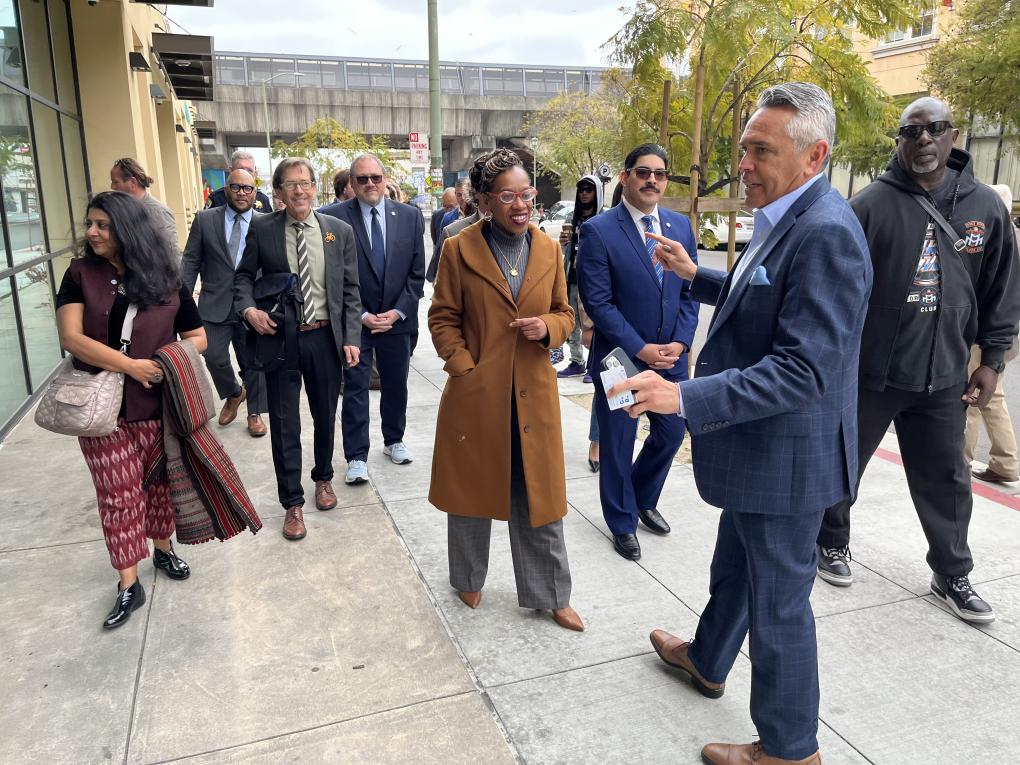
Congressmember Lateefah Simon tours Fruitvale Station.
BART’s efforts to put rider safety first are paying off with another drop in violent crime. For the first three months of the year violent crime on BART fell by 23% compared to last year. The latest drop comes on top of a 17% decline in overall crime on BART in 2024.
BART’s efforts to enhance rider safety were a focus of a tour by East Bay Congressmember Lateefah Simon (CA-12) who visited the 19th Street and Fruitvale stations in Oakland. Congressmember Simon recently met with BART in Washington, D.C., and this visit was an opportunity to get an in-person update on the progress BART has made in recent months on rider-focused safety, cleanliness, and accessibility improvements. Congressmember Simon previously served as BART Board President and BART District 7 Board Member.
“I believe that BART will be the nation’s safest transit institution,” said Congressmember Simon. “You know why? There are [transit-dependent] folks like me who don’t have a choice, who aren’t jiggling car keys. They are riding BART because unfortunately, mobility in many parts of the Bay Area is still a privilege. We’ve made it a right here at BART.”
The implementation of BART’s Safe and Clean Plan has been at the forefront of putting rider safety first. The plan includes boosting visible train patrols, installing Next Generation Fare Gates, right-sizing trains to create safer spaces, improving station lighting, and other rider-focused initiatives.
“This steep decline in our violent crime rate would not be possible without the hard work of the people of the BART Police Department,” said BART Police Chief Kevin Franklin. “We will continue to deploy sworn officers as well as non-sworn unarmed Crisis Intervention Specialists, Transit Ambassadors, Fare Inspectors, and Community Service Officers to maximize our presence in the system and ensure BART is welcoming for all.”
BART has already installed Next Generation Fare Gates at 29 stations and remains on track to have the new, more durable gates in place at all 50 stations by the end of this year. The new gates are improving the station environment by serving as a deterrent against many instances of fare evasion and reducing the amount of unwanted activity in the system. A recent survey found the number of riders who have reported seeing fare evasion on BART has dropped by almost 1/3 since installation work began for the new gates.
Join BART for Under the Stars Family Movie Night on August 16 at Concord Station
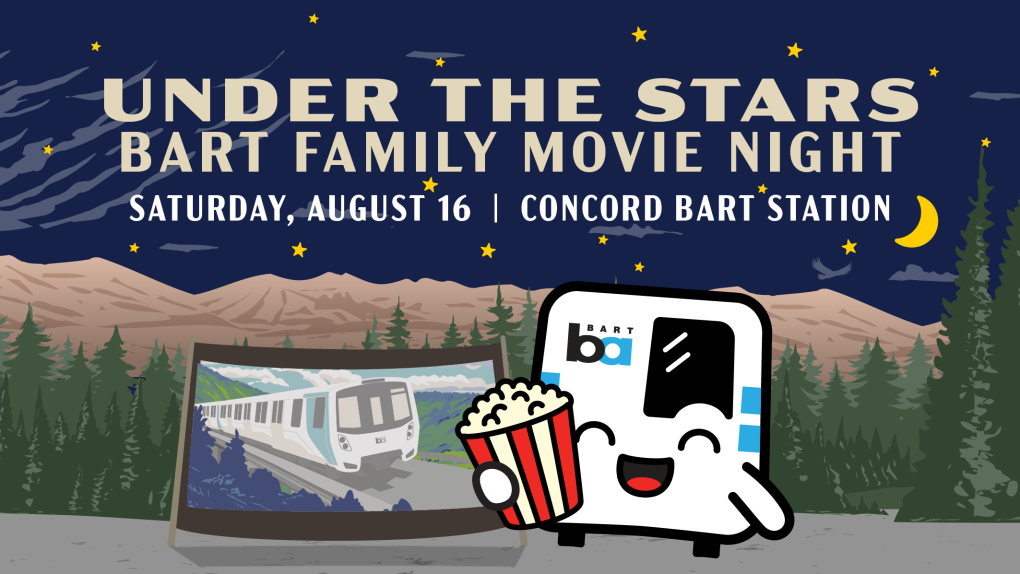
Let’s all ride BART to the movies...
Buy tickets on Railgoods.com
BART invites you to join us beneath the big Bay Area sky for a family movie night on Saturday, August 16, at Concord Station.
We’re transforming the station parking lot into a camp-themed movie theatre, where we'll screen the beloved film Madagascar once the sun sets and stars emerge. The king of the lemurs likes to “move it move it” almost as much as BART likes to move the Bay Area.
Before that iconic song gets stuck in our heads, BART will be screening never-before-seen footage filmed from a Train Operator’s point of view along all 131 miles of the BART System. The virtual ride offers a sped-up and mesmerizing perspective of the Bay Area from the five BART lines end to end.
While we wait for the sky to darken, attendees can enjoy a series of family-friendly activities, including crafts and lanyard making, face painting, a BART uniform try-on station, photo ops, and Under the Stars stickers and giveaways.
Bring your BART Stamp Passport (or pick one up at the event) to get the Under the Stars stamp. Fill up the pages of your passport to redeem a cool prize. Stamps are available at select BART events.
On Railgoods, you can purchase single tickets (click here) or a discounted family pack of 4 (click here). Your Railgoods receipt will act as your ticket. Everyone must have their own ticket. The price includes admission to the event, a bag of popcorn, a small disposable water, and fruit snacks.
We will be selling tickets at the door (credit/debit/Apple Pay/Google Pay only).
Railgoods will also sell a selection of BART merchandise, including a new BART System Map fleece blanket to be unveiled at the event.
The station parking lot will be covered with turf, but attendees should bring their own low chairs, blankets, pillows, and whatever else they might need to be comfortable for the duration of the screening, expected to be just under two hours. We will have ADA-accessible bathrooms, misters to keep people cool, and hydration stations onsite – bring a water bottle.
BART hosts events throughout the year to encourage people to ride BART and gather with their community. Learn more about fun stuff happening at BART at bart.gov/fun
Under the Stars BART Family Movie Night
Where: Concord Station parking lot
When: Saturday, August 16. Doors open at 7pm for 8pm showtime
